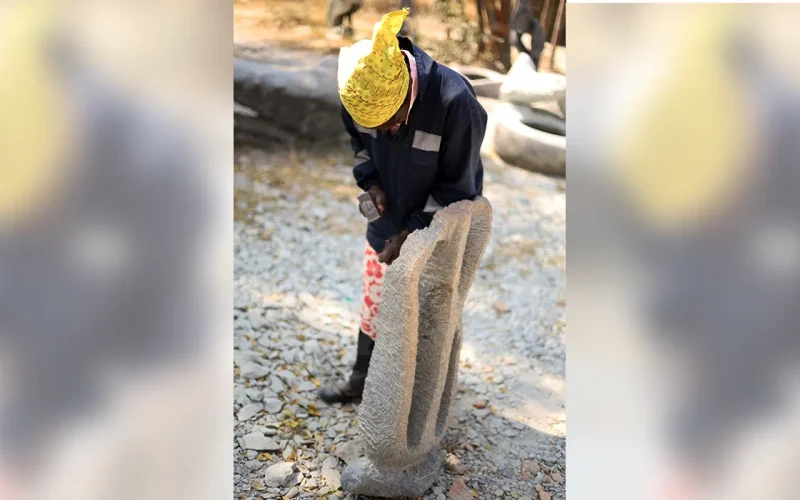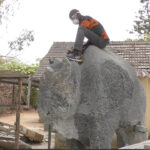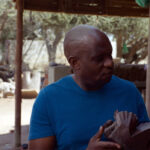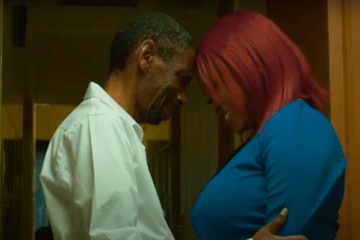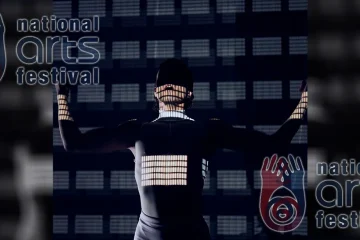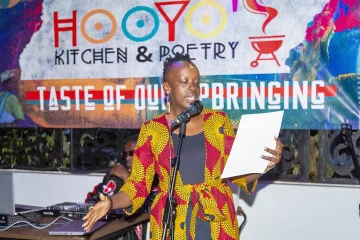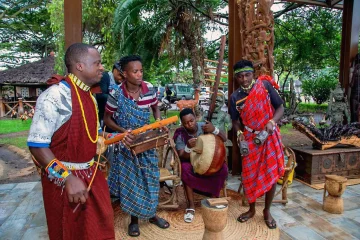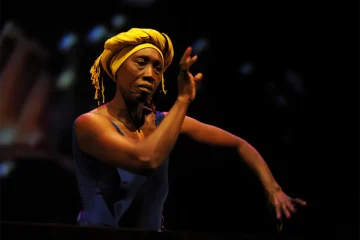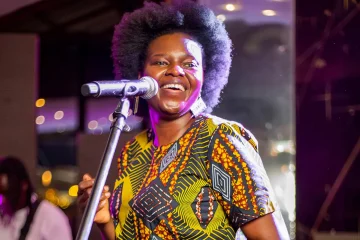THE sounds from Chitungwiza Arts Centre Complex – 24 kilometres southeast of Harare, Zimbabwe’s capital – can be heard from a distance as the sound of hammers and chisels busily shaping stone carries across the still air of a late autumn day.
Inside the centre, the sculptors behind the hammering are too focused on ensuring that each blow is perfectly angled, to pay much attention to anything outside of their work, much less a visitor walking through the complex. Among them is 52-year-old Simelokuhle Zibengwa, one of just 15 women actively sculpting amongst 150 male sculptors in this well-known art space.
“Most of my sculptures are in the form of rabbits performing different activities such as drum beating or embracing each other and this is motivated by the stories that our elders used to tell us,” Zibengwa said.
Zibengwa’s journey into stone carving dates back to 2002 when she used to work as a “finisher” – someone who washes and polishes the finished sculptures created by other sculptors – at Charohms Sculptures, located in Chitungwiza, south of Harare.
When she joined the stone carving profession, Zimbabwe was in its early years of economic and political turmoil making a job as a finisher one of the lowest paying roles.
Despite this setback, Zibengwa developed a zeal to upgrade her skills to become a professional sculptor.
“I used to admire sculptors at Charohms and their art, so I challenged myself that l should be like them one day rather than surviving on being only a finisher,” she said.
With more control over her circumstances, Zibengwa made another decision that propelled her to where she is today.
“Due to inflation in those days, l couldn’t earn much as my salary would lose value anytime so l decided to move to Chitungwiza Arts Centre,” she said.
Zibengwa trained under more qualified sculptors and became her own boss at Chitungwiza Arts Centre.
Established in 1997 by the then Ministry of Education Sports and Culture, Chitungwiza Arts Centre provides a platform for artists to showcase their work, access resources and connect with other creatives.
However, for 17 years Zibengwa’s work didn’t win any awards, but she was unshakeable and never lost hope and continued to compete in art competitions.
In 2019, she won her first award from Pathfinder Ubuntu, a non-profit organisation, and scooped the prize the following year.
“I am a two-time winner of the Nelson Foundation Pathfinders Ubuntu Award for 2019 and 2020 competitions.”
She was also the first woman sculptor from Chitungwiza Arts Centre to win the National Arts Merit Awards (NAMA) in 2022. In 2023 she was the first runner-up for the Zimbabwe European Union Exhibition and Competition Culture Month. Now, with every stroke, she aims to leave a mark in the world of art.
Chitungwiza Arts Centre Chair Tendai Gwaravaza applauded the courage portrayed by Zibengwa and other women in stone carving and further noted that when women sculptors are given opportunities and enough resources they can go far.
“Zibengwa is a patient woman and we have been working with her for more than two decades here and she is an expert in her profession. Here we train women, we allocate them spaces to operate and sell their sculptures. Most of them are now skilled equally as men,” Gwaravaza said.
Raphael Chikukwa, the Executive Director of the National Gallery of Zimbabwe asserted that there are few women in all arts centres around the country.
“As for the percentage [of women in sculpting], allow me to say it’s not enough. It would be difficult to point out obstacles, but sculpture is very male-dominated because the medium is tough, especially in stone sculpture,” Chikukwa said.
Chango Chitoko, the Vice Chairperson of Striving Women in Art – a movement that was founded by women sculptors at Chitungwiza Arts Centre in 2020 – concurred with Chikukwa.
“Traditionally, our work is male-dominated, but it makes us proud to showcase our talents and capabilities in the field,” she said.
Chitoko highlighted a challenge women sculptors encounter that hinders their full participation.
“We have limited access to international markets as most middlemen are biased towards our male counterparts. Meaning I won’t be able to transport my sculptures for competitions and exhibitions out of the country since I work from hand to mouth,” she said.
Gwaravaza re-echoed Chitoko’s experiences.
“It will be much appreciated if women get access to international markets to sell their products as well as art fairs which facilitate fair purchasing of their products. Also, most of them lack equipment such as cranes and forklifts and this limits them from producing big sculptures,” Gwaravaza explained.
This is the case for Zibengwa who aims to create on the same level as her male counterparts. Her lifelong goal has been to produce a sculpture the size of a human or an elephant, but she does not have enough resources.
“We fail to produce big pieces because we don’t have enough equipment, especially power tools. Also, we lack funds which limits us to purchase large amounts of raw materials,” she said.
Zibengwa’s lack of access to financial means is shared by the majority of women in the informal sector. A 2022 report by Women’s World Banking revealed that women, in three case studies conducted in Colombia, Ghana and Laos, were less likely to access and use formal financial tools and services, including credit. This results in a US$1.7 trillion credit gender gap among entrepreneurs.
Such a gap continues to relegate women’s capability to reach their full potential in their professions, but Zibengwa feels that quitting is not an option.
Her long-term goal in the stone carving industry is to reach the international market.
“I look forward to going out of the country showcasing and selling my sculptures. If finances allow me, I would like to start making larger sculptures,” she said.

